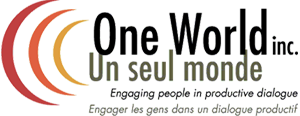What is the Theory of Change?

What’s our goal? It’s a simple question. The answer has to be made clear and kept in mind if an initiative is to be successful. Too often groups working together get swept up planning activities. Rather than keeping an end goal in sight, they focus on the activities they want to do in the interest of furthering their cause. This is only natural when you put a bunch of action-oriented people in a room together. Getting right down to doing action plans and developing activities is progress, but something’s missing. Namely, taking the time to consider why we’re doing what we’re doing.





